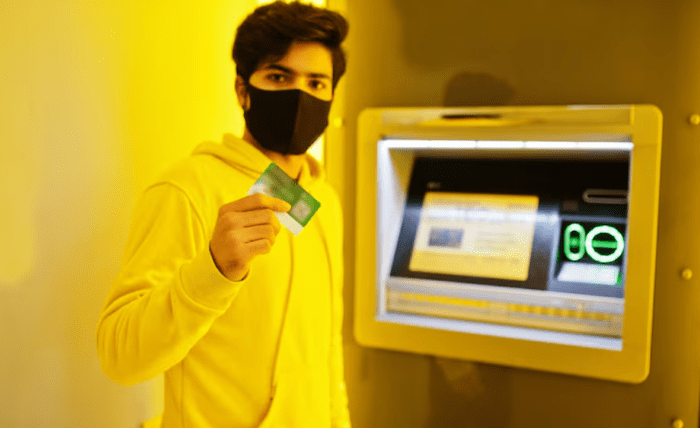
ATMs have long provided convenient cash access, but cryptocurrency kiosks are reshaping what “withdrawal” means. Understanding how traditional bank ATMs compare to Bitcoin ATMs reveals quite a few differences in fees, functionality, and risk, which raises questions about whether crypto kiosks represent the future of money access or a costly alternative.
How Traditional Bank ATMs Work (and What You Actually Get)
Conventional ATMs connect to your bank account, allowing instant cash withdrawals, deposits, and balance inquiries. The process is straightforward: insert your card, enter your PIN, and receive physical currency. Average out-of-network ATM fees reached $4.86 in 2025, combining the ATM owner’s surcharge (averaging $3.22) with your bank’s out-of-network fee (averaging $1.64). Daily withdrawal limits typically range from $300 to $1,000, though in-network transactions often carry no fees. The value you receive is strictly fiat currency, like U.S. dollars dispensed immediately with no currency conversion or settlement delays.
What Is a Bitcoin ATM? Understanding the Basics
A Bitcoin ATM operates differently from traditional machines. Instead of connecting to bank accounts, these kiosks accept cash and convert it to cryptocurrency, which is sent to your digital wallet. The process requires scanning a QR code for your wallet address, inserting cash, and waiting for blockchain confirmation. Most Bitcoin ATMs are “one-way” machines, allowing only purchases, because selling crypto for cash remains rarer due to regulatory complexity. These machines must comply with Know Your Customer and anti-money laundering regulations, often requiring ID verification for transactions exceeding certain thresholds. The fees are substantially higher than traditional ATMs, with transaction costs frequently ranging from 10% to 25% of the purchase amount.
Comparing Value: Fees, Spread, Speed & Risk
The cost difference between traditional and Bitcoin ATMs is substantial. While bank ATM fees rarely exceed $5, Bitcoin ATM operators charge steep markups, combining exchange rate spreads with service fees that can reach 15-30% of transaction value. These charges reflect operational costs, regulatory compliance, and lower transaction volumes compared to traditional ATMs. Speed also differs: traditional ATMs provide instant cash, whilst Bitcoin transactions require network confirmation, typically taking 10-60 minutes. Risk is another critical distinction. Bitcoin ATM-related fraud losses exceeded $114 million, with scammers exploiting the irreversibility of cryptocurrency transactions. Older adults prove particularly vulnerable to schemes involving fraudulent customer service calls directing victims to Bitcoin ATMs.
Trends, Growth & What the Future Might Look Like
Bitcoin ATM networks expanded approximately 6% globally in 2024, reaching 38,768 machines by early 2025, with the U.S. maintaining 81% market share. However, the landscape faces headwinds. Some U.S. cities and states are exploring restrictions due to fraud concerns, with Minnesota municipalities considering outright bans on crypto kiosks. Security vulnerabilities persist; for instance, recent data breaches at Bitcoin ATM operators have compromised thousands of customer records. Regulatory pressures continue mounting as authorities attempt to curb criminal exploitation. The future likely involves stricter oversight rather than unchecked expansion.
While crypto kiosks serve niche purposes, like providing unbanked populations with cryptocurrency access or enabling quick conversions, digital exchanges and mobile wallets remain more cost-effective for most users. Physical crypto infrastructure may persist, but improved regulation and lower fees would be necessary for mainstream adoption comparable to traditional banking ATMs.




